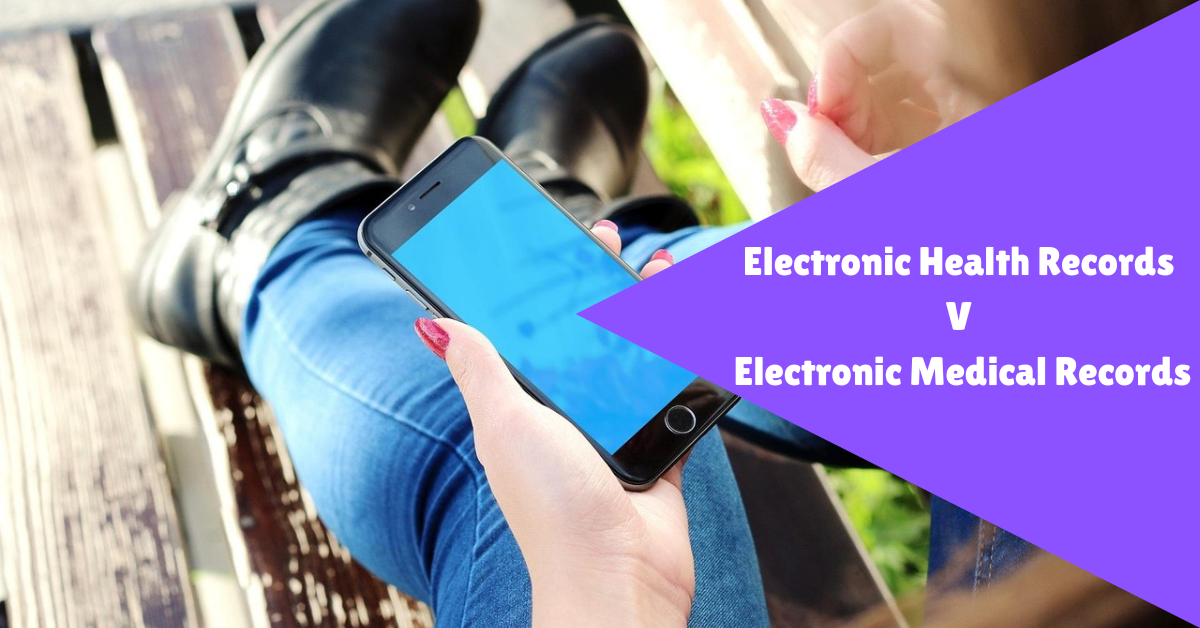In the world of digital healthcare, two commonly used terms often confuse healthcare providers and patients alike — Electronic Health Record (EHR) and Electronic Medical Record (EMR). While they sound similar, they serve different purposes and have unique advantages.
This article will break down electronic health record vs electronic medical record, helping you understand how each system functions and which one is better suited for your healthcare practice or institution.
Ready to take the first step?
We’ll assist you through every step.

What Is an Electronic Medical Record (EMR)?
An Electronic Medical Record (EMR) is a digital version of a patient’s chart within a single healthcare provider’s system. It contains medical and treatment history, diagnoses, prescriptions, lab results, and doctor’s notes — all from one clinic or hospital.
Key Features of EMRs:
- Patient history is stored in one location
- Used mainly by a single healthcare provider or department
- Ideal for internal use in clinics or small hospitals
- Tracks visits, diagnoses, and treatment within one organization
- Limited sharing with external providers
Benefits of EHR Systems Over EMR
When comparing electronic health record vs electronic medical record, it’s clear that EHRs offer broader benefits in most modern settings:
1. Better Coordination of Care
EHRs allow different specialists to view patient history, reducing errors and unnecessary tests.
2. Improved Patient Engagement
With access to online portals, patients can view records, test results, and follow-up instructions.
3. Enhanced Data Accuracy
Shared data reduces duplication and ensures updated information across providers.
4. Support for Public Health Monitoring
Aggregated EHR data helps in tracking diseases and supporting healthcare planning.
What Is an Electronic Health Record (EHR)?
An Electronic Health Record (EHR) is a broader digital system that goes beyond individual clinical records. It includes information from multiple healthcare providers involved in a patient’s care, allowing for more coordinated and holistic healthcare.
Key Features of EHRs:
- Accessible across different clinics, labs, hospitals, and specialists
- Integrates with labs, pharmacies, diagnostic centers, and insurance
- Contains full medical history, allergies, radiology images, and immunizations
- Supports interoperability and care coordination
- Often includes patient access through portals or mobile apps
Electronic Health Record vs Electronic Medical Record: A Quick Comparison
| Feature | EMR | EHR |
|---|---|---|
| Data Scope | Single practice or clinic | Multiple providers and care settings |
| Interoperability | Limited | High — supports data sharing |
| Accessibility | Internal use only | Accessible across healthcare systems |
| Ideal For | Individual clinics, private practices | Hospitals, networks, multi-specialty |
| Patient Access | Usually not available | Often includes patient portals |
| Use in India | Common in small clinics | Growing adoption in hospitals and government systems |
EHR and EMR Adoption in India
India is seeing a growing shift from standalone EMRs to more integrated EHR systems, especially with government initiatives like the Ayushman Bharat Digital Mission (ABDM). Hospitals, insurance providers, and health apps are encouraged to adopt EHRs to create a national digital health ecosystem.
However, many private clinics still rely on EMRs due to affordability and simplicity.
When to Choose EMR vs EHR?
Choose an EMR if:
- You run a small clinic or private practice
- You do not need to share patient data externally
- You want a budget-friendly solution with essential features
Choose an EHR if:
- You work in a hospital or multi-specialty practice
- You refer patients to or receive referrals from other providers
- You want to provide telemedicine, digital prescriptions, and integrated care
Data Security in EHR and EMR Systems
Both EHR and EMR systems must follow strict data security protocols. In India, digital health systems are expected to comply with DISHA (Digital Information Security in Healthcare Act) and NDHM (now ABDM) guidelines. Choose software that provides encryption, role-based access, audit trails, and regular backups.
How Can Kiddoklinik Help?
When considering electronic health record vs electronic medical record, think of EMRs as a digital version of paper charts used by one doctor, while EHRs are a comprehensive digital health system connecting multiple providers.
While both have their place, the future of healthcare is moving towards EHR systems due to their ability to deliver connected, patient-centered care. As India embraces digital transformation in healthcare, adopting EHRs will ensure better outcomes, higher efficiency, and stronger doctor-patient relationships.
Our consultants at Kiddoklinik can help you to use the system with clarity. Contact us to know more!
FAQs
Q 1: What is the main difference between electronic health record and electronic medical record?
Answer:
The main difference between an electronic health record (EHR) and an electronic medical record (EMR) is the scope of data sharing. EMRs are digital versions of a patient’s chart within one clinic or hospital, while EHRs are designed to share patient data across multiple healthcare providers, enabling coordinated and comprehensive care.
Q 2: Is EHR or EMR better to use in India?
Answer:
For hospitals in India, EHR systems are generally better as they support interoperability, patient portals, integrated lab and pharmacy systems, and compliance with national digital health initiatives like ABDM. EMRs may still be suitable for small or solo practices with limited data sharing needs.
Q 3: Can a clinic upgrade from an EMR to an EHR system?
Answer:
Yes, many clinics can upgrade from EMR to EHR systems as their needs grow. Migrating to an EHR allows for broader data access, better care coordination, and integration with diagnostic centers, specialists, and government health platforms, making it ideal for long-term scalability.



